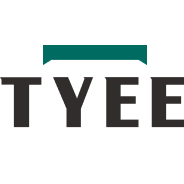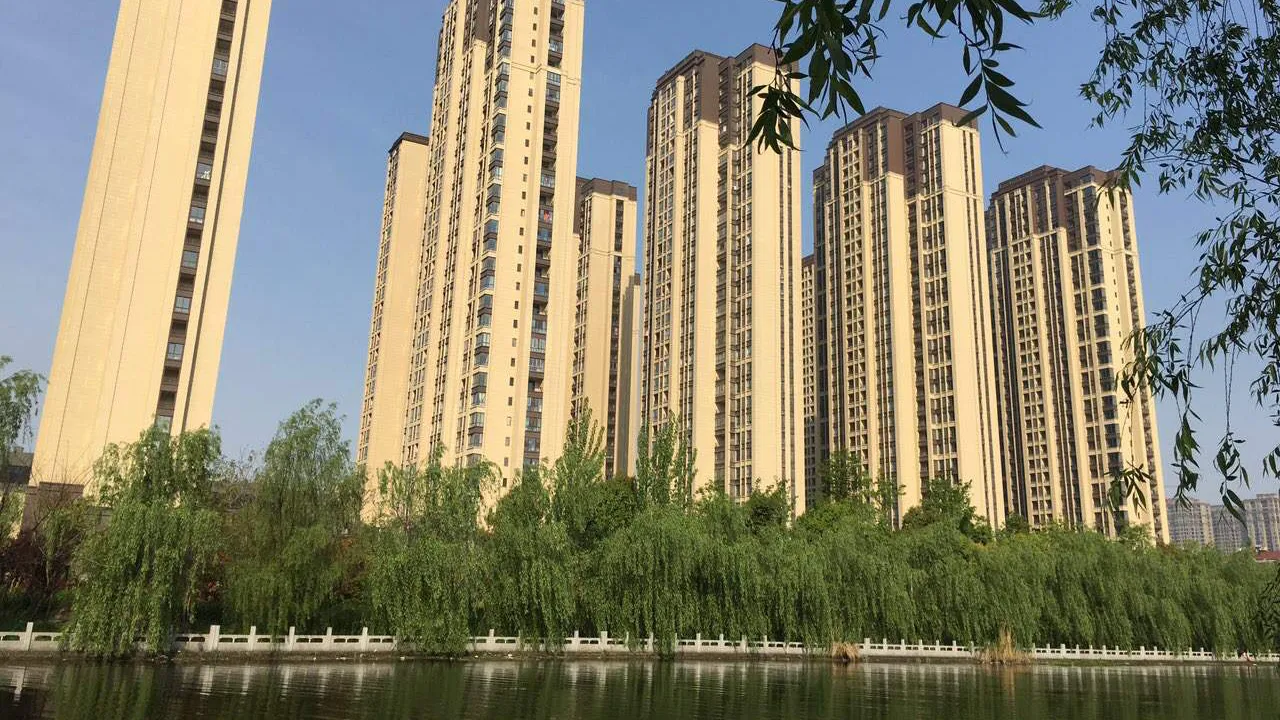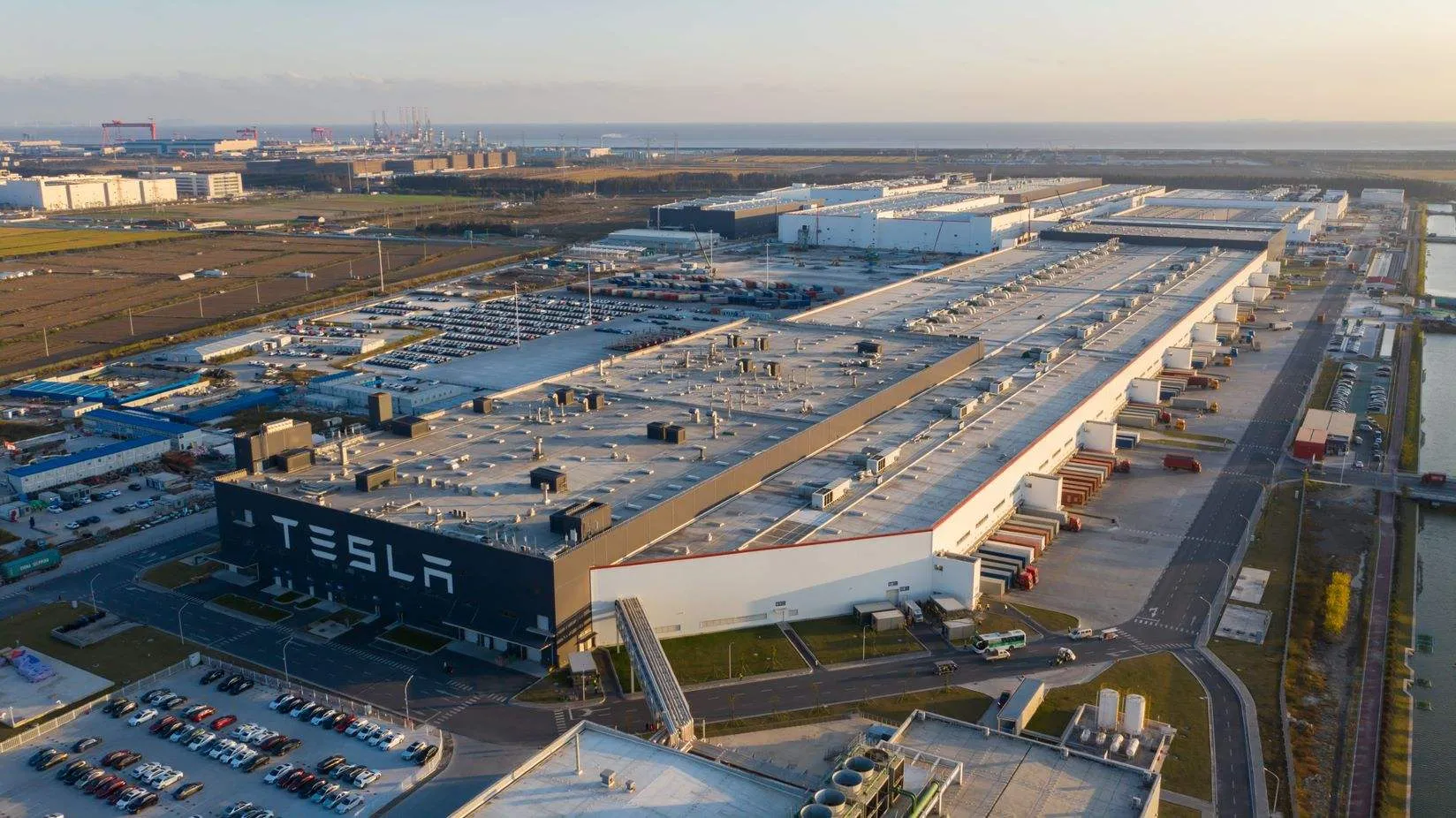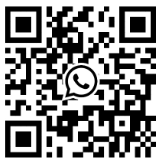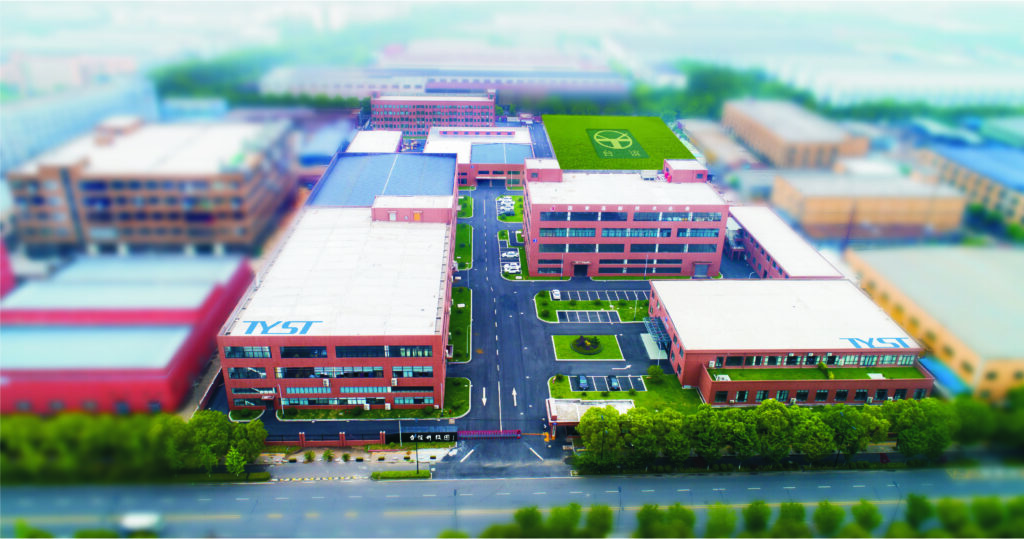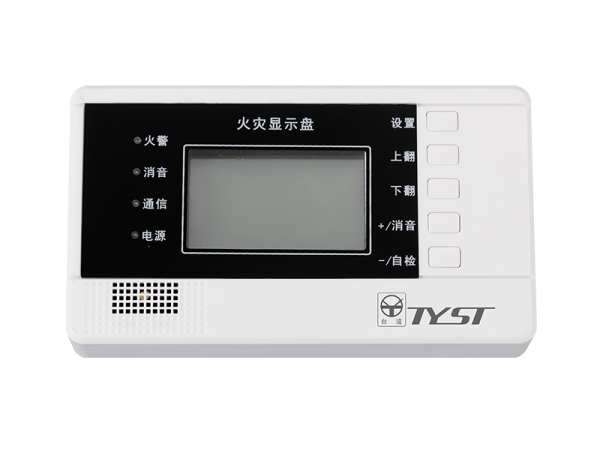
A fire alarm system is your first line of defense against fires. It detects early signs of fire, alerts occupants, and helps prevent major losses. In 2025, stricter regulations have made fire alarms essential for safety compliance. Buildings equipped with fire detection systems experience 40% less damage during fires. Additionally, insurance companies offer up to 15% discounts for real-time fire monitoring solutions. Trusted by leading developers, Tyee and its tyeefire products are at the forefront of advanced fire alarm systems, delivering safety and reliability for businesses worldwide.
Key Takeaways
-
Fire alarm systems help find fires early, warn people, and lower damage.
-
In 2025, stricter rules make fire alarms important for safety in businesses.
-
New fire alarms can cut fire damage by 40%, saving money and property.
-
Insurance companies may give up to 15% discounts for using smart fire alarms.
-
Checking and testing fire alarms often is key to keeping them working well.
-
Picking the right fire alarm depends on your building’s size and number of people.
-
Smart fire alarms use new tech to find fires faster and respond quickly.
-
Working with fire safety experts helps businesses choose and care for fire alarms.
Understanding Fire Alarm Systems
What is a Fire Alarm System
A fire alarm system is a group of devices that finds fires. It spots early signs like smoke, heat, or flames. Then, it sets off alarms to warn people and emergency teams. These systems are crucial for lowering fire risks and keeping places safe. They are used in offices, factories, and stores.
Here’s a table to explain how these systems work:
|
Evidence Type |
Description |
|---|---|
|
Risk Assessment Models |
Checks risks and adjusts plans as conditions change. |
|
Index Data |
Uses math to turn data into risk scores. |
|
Dynamic Risk Correction |
Updates risks based on new facts and changes. |
This mix of risk checks and live monitoring gives accurate alerts. It helps you act fast to avoid dangers.
Why Enterprises Need Fire Alarm Systems in 2025
In 2025, businesses must have fire alarm systems due to stricter rules. The British Standard BS 5839-1:2025 now has tougher demands for fire safety in workplaces. If you own a business, you need to follow these rules. This keeps you safe from fines and protects your property.
Fire risks are also growing, especially in crowded cities with tall buildings. New fire alarm systems use smart tech like IoT and AI. These tools make safety better by spotting fires early. They also give live updates and predict problems before they happen.
Businesses with fire alarm systems often face less damage from fires. Studies say modern alarms can cut fire damage by 30%. Fires cause $2.4 billion in losses each year. A good fire alarm system saves money and keeps your property safe.
Key Benefits of Fire Alarm Systems for Businesses
Fire alarm systems offer many benefits beyond just following rules. Here are some key points:
-
Enhanced Safety: They find fires early and warn people quickly.
-
Asset Protection: They reduce damage to your equipment and stock.
-
Regulatory Compliance: They help you meet rules like BS 5839-1:2025.
-
Cost Savings: Insurance companies may give discounts of up to 15%.
-
Business Continuity: They lower the chance of big losses. FEMA says 40% of businesses don’t reopen after disasters, and 25% close within a year.
More businesses now see how important fire safety is. By getting a modern fire alarm system, you follow the law and make your workplace safer for everyone.
Components of a Fire Alarm System
Fire alarm systems have many parts that work together. They find fires and warn people. Each part is important for the system to work well.
Control Panels
The control panel is like the system’s brain. It gets signals from detectors and turns on alarms. Think of it as the main center that controls everything. New panels are easy to use and show system updates. They also connect with other building systems for better performance.
Fire Detectors
Fire detectors are sensors that spot fire signs. They check for smoke, heat, or flames. These sensors help catch fires early so you can act fast.
Smoke Detectors
Smoke detectors find tiny particles in the air from fires. They use special tools like light sensors or ionization to detect smoke. Light sensors are good for slow fires, while ionization works better for fast fires.
Heat Detectors
Heat detectors notice temperature changes. They go off when it gets too hot or heats up quickly. These are great for places like kitchens where smoke detectors might give false alarms.
Notification Appliances
Notification appliances warn people during emergencies. They give clear alerts so everyone knows what to do.
Alarms and Sirens
Alarms and sirens make loud noises to get attention. They are loud enough for big areas, helping people evacuate quickly.
Strobe Lights
Strobe lights flash brightly to warn people. They are helpful for those who can’t hear alarms. The flashes make sure everyone knows there’s danger.
Tip: Test and maintain fire alarm parts often. Studies show regular checks improve how well systems work and lower failures.
|
Evidence Type |
Description |
|---|---|
|
Component Failures |
Shows how testing finds weak parts in fire systems. |
|
Inspection and Maintenance |
Explains why checking and fixing systems keeps them reliable. |
|
Research Projects |
Studies to improve fire systems, like how smoke detectors react. |
|
Predictive Models |
Builds models to make smoke detectors work better in designs. |
|
Statistical Data |
Uses numbers to see how rules and designs affect system reliability. |
These parts make a strong fire alarm system. Knowing how they work helps keep the system running well and people safe.
Power Supply and Backup Systems
A fire alarm system needs steady power to work properly. Without power, it can’t find fires or warn people. This makes the power supply very important. Most systems use the building’s electricity as the main power source. But they also have backups to keep working during power outages.
Backup systems use batteries or generators. Batteries give power for a few hours. Generators can provide power for longer times. These backups turn on automatically if the main power goes out. This ensures the system keeps protecting you. Testing both main and backup power is very important. It makes sure the system works during emergencies.
Tip: Check your backup systems often. This helps find problems early.
Auxiliary Devices
Auxiliary devices make fire alarm systems more useful. They help detect and respond to fires in extra ways.
Manual Pull Stations
Manual pull stations let people start the alarm themselves. These are placed in easy-to-reach spots like exits or hallways. Pulling the lever sets off the alarm right away. This is helpful if detectors don’t catch the fire quickly. For example, if a fire starts where there are no detectors, a pull station can still raise the alarm.
To use one, just pull the lever or handle. This sends a signal to the control panel, which turns on the alarms. Keep these devices clean and check them often. Dust or dirt can stop them from working.
Emergency Communication Systems
Emergency communication systems are another helpful device. They give real-time instructions during a fire. These include speakers, intercoms, and text alerts. Their job is to guide people to safety.
For example, speakers can tell people where to go or warn about blocked exits. Some systems use pre-recorded messages for specific situations. These messages reduce confusion and help evacuations go faster. In 2025, many systems also send alerts to smartphones. This ensures everyone gets important updates, even if they’re far from a speaker.
Note: Test your emergency communication system often. Clear messages can save lives in a fire.
Types of Fire Alarm Systems
Fire alarm systems come in various types for different needs. Knowing these types helps you pick the best one for your business.
Conventional Fire Alarm Systems
Conventional fire alarm systems are basic and easy to use. They split your building into zones, each linked to a control panel. If a fire starts, the system shows the zone but not the exact spot.
These systems are good for small buildings or businesses with fewer alarms. They are affordable and simple to set up. But finding the fire takes manual checks, which can delay action.
Here’s a table comparing conventional and advanced systems:
|
Metric |
Conventional Fire Alarm Systems |
Advanced Fire Alarm Systems |
|---|---|---|
|
Detection Capabilities |
Basic sensors, limited analytics |
Smart sensors, AI integration |
|
Response Time |
Moderate, dependent on manual alerts |
Enhanced, real-time alerts with location tracking |
|
Installation Complexity |
Generally easier, but less flexible |
More complex, but allows for wireless installation |
|
Maintenance Costs |
Lower initial costs, but may require more frequent checks |
Higher initial costs, but reduced maintenance needs |
|
Integration with Other Systems |
Limited integration capabilities |
High integration with other safety systems |
Tip: Conventional systems work well for small businesses needing simple solutions.
Addressable Fire Alarm Systems
Addressable fire alarm systems are more advanced. Each device has a unique address, so you can find the exact fire location. This speeds up evacuations and emergency responses.
These systems use digital signals to link detectors, alarms, and panels. They are dependable and reduce false alarms. Addressable systems also connect easily with other safety tools like sprinklers and lights.
If your business has many floors or a tricky layout, addressable systems offer better coverage. They are scalable, making them great for large buildings.
Note: Addressable systems cost more upfront but save money over time with their accuracy.
Hybrid Fire Alarm Systems
Hybrid fire alarm systems mix features from both conventional and addressable systems. They combine zoning with precise fire detection.
These systems are flexible and fit buildings with mixed needs. Some areas can have basic coverage, while others get detailed monitoring. Hybrid systems balance cost and performance, making them ideal for medium-sized businesses.
They also work with smart tech, letting you control them remotely. This adaptability keeps your system effective as your business grows.
Callout: Hybrid systems are perfect if you need a budget-friendly, customizable solution.
Wireless Fire Alarm Systems
Wireless fire alarm systems use radio signals to link parts. These include detectors, alarms, and control panels. They don’t need wires, which makes them great for tricky layouts or old buildings where wiring might cause harm.
Key Features of Wireless Fire Alarm Systems:
-
Easy Setup: Wireless systems are fast to install. They save time and cost compared to wired systems.
-
Adaptable: You can add or move devices easily without new wiring. This is helpful for growing businesses or temporary spaces.
-
Dependable: Modern wireless systems use secure signals to avoid interference. This keeps them working well.
Wireless fire alarm systems are useful for businesses with many buildings or far-off locations. They let you monitor everything in one place and get live updates from all connected areas.
Tip: Check wireless device batteries often to keep them working properly.
Smart Fire Alarm Systems for 2025
Smart fire alarm systems are the future of fire safety. They use advanced tools like IoT, AI, and cloud computing to improve how they detect and respond to fires.
Why Smart Fire Alarm Systems Are Important:
-
Better Detection: AI sensors check smoke, heat, and other signs for accuracy.
-
Live Monitoring: Cloud systems give instant data to help during emergencies.
-
Works with Other Tech: These systems connect with building tools like cameras and air systems for full safety coverage.
Here’s a table showing trends that prove smart fire alarm systems are helpful:
|
Evidence Type |
Description |
|---|---|
|
Software Growth |
|
|
Intelligent Systems |
Smart systems are becoming popular for better fire detection. |
|
Rules and Regulations |
Stricter rules are increasing the need for smart fire systems. |
Smart fire alarm systems also lower false alarms. They use machine learning to tell real dangers apart from harmless things like steam or dust.
Callout: Governments are making stricter fire safety rules, so smart fire systems are now needed to follow the law.
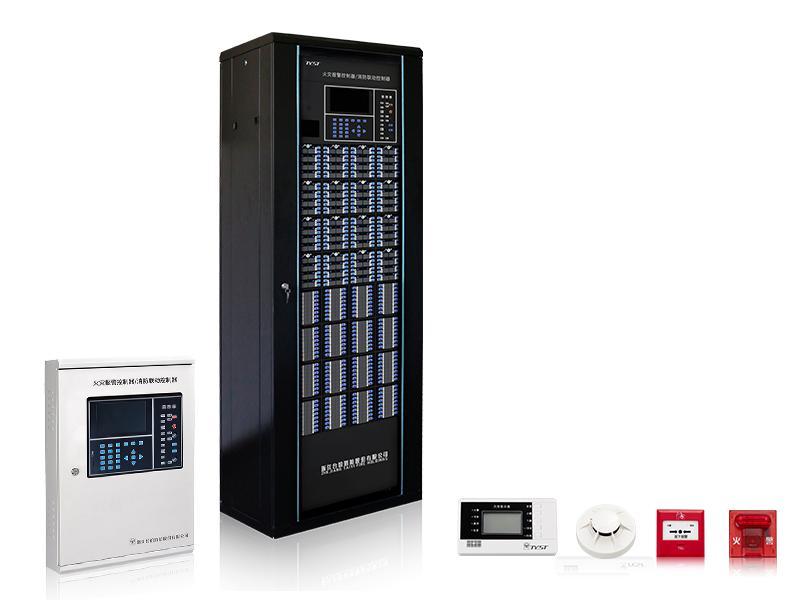
tyee Automatic Fire Alarm System
The tyee Automatic Fire Alarm System uses advanced tools to protect businesses. It combines smart detectors, quick algorithms, and fast alerts for reliable safety.
Features of the TY2001 Automatic Fire Alarm System:
-
Smart Detection: Multi-sensor detectors check smoke, heat, and other changes for accurate results.
-
Quick Alerts: Signals are processed in three seconds for faster action.
-
Simple Controls: The control panel has a big screen showing live data like smoke levels and temperature.
-
Expandable: It connects up to 64 controllers, making it good for big businesses.
The TY2001 system also lets you monitor fire safety remotely. You can check multiple places from one system. Its smart tools reduce false alarms, keeping your business safe without interruptions.
Note: The TY2001 system can be customized to fit different building needs.
Choosing the tyee Automatic Fire Alarm System gives you a modern solution. It meets today’s fire safety rules and offers advanced features for strong protection.
Fire Alarm Requirements for Enterprises
Occupancy Type and Building Size
The kind of building and its size matter for fire alarms. Different buildings have different fire risks based on their use and how many people are inside. For example, a busy shopping mall needs a stronger fire alarm system than a small office.
The type of building affects how people evacuate and what alarms are needed. Buildings with many people face challenges during emergencies. Getting everyone out quickly needs clear warnings and dependable systems. Also, having flammable items like paper or chemicals increases fire dangers. Messy spaces can make this worse by letting these materials pile up.
Here’s a table showing key points about building type and size:
|
Factor |
Description |
|---|---|
|
More people make evacuation harder and raise fire risks. |
|
|
Presence of Combustibles |
Flammable items in buildings increase how bad fires can get. |
|
Housekeeping Measures |
Messy areas with flammable items make fires more likely. |
|
Fire Risk Assessment Practices |
Skipping checks can miss dangers, making fires more likely. |
Tip: Check your building often for fire risks based on its use.
Industry-Specific Regulations
Each industry has its own fire safety rules. These rules make sure fire alarms match the risks of that industry. For example, hospitals need alarms that protect patients, while factories need alarms that work in tough conditions.
Following these rules means meeting standards like NFPA 72 and OSHA guidelines. These rules explain how fire alarms should work during emergencies. Local fire codes are also important. They focus on special risks in your area, like old buildings or tall skyscrapers.
Here’s a table with key compliance details:
|
Compliance Aspect |
Description |
|---|---|
|
Local Fire Codes |
Follow rules for risks like old or tall buildings. |
|
NFPA 72 |
Meet national standards for fire alarm performance. |
|
OSHA Standards |
Use alarms that protect workers from fire dangers. |
|
ADA Compliance |
Make sure alarms work for people with disabilities. |
|
Regular Maintenance |
Test alarms often to keep them working in emergencies. |
Callout: Matching your fire alarm system to your industry’s rules improves safety and meets legal needs.
Compliance with Updated Codes and Standards
Local Fire Safety Regulations
New fire safety rules focus on preventing problems early. Knowing your local rules helps you avoid fines and keeps your fire alarm system up to date. For example, many cities now need alarms with live updates and remote controls.
Following rules means more than just installing alarms. You need regular checks to make sure they work and meet standards. Comparing your fire safety to others can show where you need to improve.
The fire alarm market is growing by 6% yearly from 2025 to 2035. This shows stricter rules and better fire safety awareness. But studies say 38% of businesses skip fire risk checks, and 40% don’t train workers to stop false alarms. Fixing these problems is key to staying compliant.
Note: Use past fire data to improve your fire safety plans. Learning from history makes your system better.
Risk Assessment and Hazard Analysis
Risk assessment and hazard analysis are key to keeping your business safe. These steps help find fire risks and check how bad they could be. By knowing these risks, you can act early to protect your building, workers, and customers.
What Is Risk Assessment?
Risk assessment means spotting fire dangers in your building. It also checks how likely they are to cause harm and how serious the damage could be. This helps you focus on safety steps and use resources wisely.
Here’s how to do a simple fire risk assessment:
-
Identify Fire Hazards: Find things that might cause fires, like bad wiring or flammable items.
-
Determine Who Is at Risk: Think about anyone in the building, like workers or visitors.
-
Evaluate Existing Safety Measures: See if your fire alarms, sprinklers, and plans are good enough.
-
Record Your Findings: Write down the risks and how you’ll fix them.
-
Review Regularly: Update your checks when your building or work changes.
Tip: Regular checks keep your fire safety plan strong and current.
What Is Hazard Analysis?
Hazard analysis goes deeper than risk assessment. It looks at how specific fire dangers could lead to emergencies. It uses data and tools to predict what might happen and how bad it could get.
For example, if your building has flammable chemicals, hazard analysis checks how they might catch fire and spread. It also tests if your fire alarm system can handle such events.
Why Are These Processes Important?
Risk assessment and hazard analysis help meet fire alarm needs. They guide you in picking the right system and following safety rules. These steps also lower fire risks by finding weak spots in your safety setup.
Here’s a table of their benefits:
|
Benefit |
Description |
|---|---|
|
Early Hazard Detection |
Finds risks before they turn into problems. |
|
Improved Safety Measures |
Helps you set up better fire prevention plans. |
|
Regulatory Compliance |
Makes sure your fire alarm meets safety rules. |
|
Cost Savings |
Cuts fire damage and lowers insurance costs. |
How to Use Risk Assessment and Hazard Analysis for Fire Alarm Systems
Use what you learn from risk assessment and hazard analysis to pick a fire alarm system. For example, if your building has many floors, an addressable system can show the exact fire spot. If you work in a high-risk area like manufacturing, choose a system with smart tools like the TY2001 Automatic Fire Alarm System.
Callout: A good risk assessment helps you choose the best fire alarm for your building.
By doing regular risk checks and hazard studies, you make your workplace safer. These actions save lives and protect your business from fire risks.
Choosing the Right Fire Alarm System
Understanding Business Needs
Building Layout and Size
Your building’s size and layout decide the fire alarm type. Small offices might need simple systems. Big buildings with many floors need advanced ones. For example, open spaces with high ceilings need extra smoke detectors. Narrow hallways or tricky layouts work better with addressable systems. These systems show the exact fire location.
Focus on areas with higher fire risks, like kitchens or storage rooms. These spots may need special detectors, such as heat sensors. Knowing your building’s layout helps you pick a system that covers all areas well.
Number of Occupants
The number of people in your building affects alarm needs. Crowded places, like malls, need loud alarms and clear instructions. Smaller offices with fewer people need fewer devices.
Think about who uses the building. Hospitals need alarms that avoid panic and guide patients. Factories need alarms loud enough to hear over machines. Matching the system to the number and type of people ensures safe evacuations.
Checking System Features
Scalability
Scalability is key if your business might grow. A scalable system lets you add more alarms or detectors later. For example, if you expand your building, you can add devices without replacing the system.
Systems like the TY2001 Automatic Fire Alarm System connect up to 64 controllers. This makes it easy to adjust as your business changes, saving money over time.
Integration Capabilities
Modern systems work with other safety tools. This improves safety and efficiency. For example, some systems connect to sprinklers to turn them on automatically. Others link to cameras for real-time monitoring.
Here’s a table of important system features:
|
Feature |
Description |
|---|---|
|
Finds fires fast to reduce damage and keep people safe. |
|
|
Accurate Fire Location |
Shows exactly where the fire is for faster response. |
|
Alerts to Firefighters |
Sends quick alerts to fire departments for faster help. |
|
High Voltage Control |
Manages power systems to avoid extra dangers during fires. |
|
Reliability |
Checks how often parts might fail to ensure the system works well. |
|
Regular Maintenance |
Testing and inspections keep the system working properly. |
Choosing a system with these features makes your workplace safer and more efficient.
Budget Planning
Your budget matters when picking a fire alarm system. Basic systems cost less but may lack important features. Advanced systems, like smart alarms, cost more but save money over time with better performance.
Follow these steps to decide:
-
Check your building for fire risks.
-
Follow safety rules for your industry.
-
Balance your budget with the need for good features.
-
Plan for regular system checks to avoid surprise costs.
Spending on a good fire alarm system protects your building, people, and belongings.
Consulting Fire Safety Professionals
Picking the right fire alarm system can be confusing. Fire safety experts make this easier. They study your building and suggest systems that match your needs. Their help ensures your system follows local rules and industry standards.
Experts check for fire risks by doing safety assessments. They look at your building’s layout, how many people use it, and fire dangers. This shows which areas need extra care. For example, they might recommend heat detectors for kitchens or addressable systems for tall buildings.
These professionals also assist with setup and upkeep. They make sure your system works well and meets safety laws. Regular expert checks keep your system dependable. They find problems early, lowering the chance of failure during emergencies.
Tip: Work with certified fire safety experts. Their knowledge saves time and keeps your system effective.
Experts also keep you informed about new fire safety tools. They introduce advanced systems like smart alarms or wireless setups. These systems improve how fast fires are detected and handled, making your building safer.
Why Choose tyee for Fire Alarm Solutions
tyee is a trusted name in fire safety. With over 32 years of experience, tyee leads the industry. Its tyeefire products offer modern solutions for today’s businesses.
tyee specializes in smart systems like the TY2001 Automatic Fire Alarm System. This system uses advanced sensors and quick alerts for accurate fire detection. It connects up to 64 controllers, making it great for big buildings. Its simple controls and remote monitoring make management easy.
tyee’s quality is backed by certifications like ISO9001, UL, and CE. These prove its products are reliable and meet safety standards. The company’s top-notch production ensures dependable solutions for businesses worldwide.
Callout: tyee has worked on big projects like Shanghai Disneyland and Hangzhou Olympic Sports Center. Its systems protect industries like healthcare and shopping centers.
Choosing tyee means trusting a leader in fire safety. Its smart products and expert services keep your business safe. With tyee, you get more than a fire alarm—you get peace of mind.
Integration and Monitoring
Benefits of System Integration
Integration with Security Systems
Linking fire alarms with security systems boosts safety and efficiency. These systems share data during emergencies for better responses. For example, if a fire starts, cameras can focus on the fire area. This helps emergency teams act faster.
Integration also allows automatic actions. Fire doors can close, and air systems can shut off. These steps stop smoke from spreading and protect people. A single control system makes managing both easier and quicker.
Here’s a table showing integration benefits:
|
Benefit |
Description |
|---|---|
|
Fire alarms and safety systems share important information. |
|
|
Easier Monitoring |
Manage all safety systems from one control point. |
|
Coordinated Actions |
Systems work together to handle emergencies more effectively. |
Integration with Building Automation Systems
Connecting fire alarms to building automation systems (BMS) improves safety. This setup automates safety actions like turning off elevators or switching on emergency lights when smoke is detected.
It also saves time and money. Mobile apps let you upload inspection results and keep records online. Smart tools analyze data to cut costs and improve equipment use. By linking to BMS, you make safety responses faster and daily tasks smoother.
Importance of 24/7 Monitoring
Always-on monitoring is key to keeping your business safe. Fires can happen anytime, even when no one is there. Monitored systems send alerts to emergency services right away, speeding up help.
With 24/7 monitoring, you know your fire alarm is always working. It spots smoke or heat and sends alerts to monitoring centers. These centers then contact firefighters and managers for quick action.
Without monitoring, responses can be slow, causing more damage. Choosing monitoring protects your property and everyone inside.
Remote Access and Control in 2025
In 2025, remote access makes fire alarms smarter. You can check and control your system using phones or computers from anywhere. This lets you see alerts, check status, and fix problems remotely.
Remote access also saves time. You can view data online and plan repairs without being on-site. For example, if a detector breaks, you can schedule a fix quickly.
This tech keeps your fire alarm system reliable, even when you’re away. Real-time updates help you stay ready for any emergency.
tyeefire Monitoring Solutions
tyeefire monitoring solutions help keep your fire alarm system working all the time. They protect your business, even when no one is there. Using smart tools, tyeefire gives quick updates and fast help during emergencies.
What makes tyeefire monitoring solutions special?
-
24/7 Monitoring: The system watches for smoke, heat, or fire signs nonstop. It sends alerts right away when it finds danger. This constant checking makes sure fires don’t go unnoticed.
-
Remote Access: You can check and control your fire alarm from anywhere. Use your phone or computer to see alerts, check status, or fix problems without being on-site.
-
Quick Emergency Help: tyeefire connects directly to firefighters. If a fire starts, the system alerts them fast. This quick action lowers damage and keeps people safe.
-
Smart System Integration: tyeefire works with other safety tools. It can turn on sprinklers or close fire doors automatically. This teamwork improves safety and saves time.
Why pick tyeefire monitoring solutions?
-
Dependable: tyeefire uses smart tech to find fires accurately. It avoids false alarms, giving you confidence in its performance.
-
Meets Rules: The system follows strict fire safety laws, keeping your business compliant.
-
Expandable: Whether your building is small or large, tyeefire can grow with your needs. Adding more devices is easy as your business expands.
Tip: Test your fire alarm system often to make sure it works during emergencies.
Choosing tyeefire monitoring solutions means better safety and faster responses. These systems protect your property and keep everyone inside safe.
Maintenance and Testing
Regular Inspection and Testing
Checking your fire alarm system often ensures it works when needed. Inspections find problems early, keeping the system safe and following rules. The National Fire Protection Association (NFPA) suggests inspection schedules. Some parts need weekly checks, while others need monthly or quarterly reviews. Following these schedules keeps your system in good shape.
Experts should handle these inspections. They can find hidden issues like broken wires or old parts. These checks improve safety and help you meet legal requirements.
Tip: Plan regular inspections to avoid sudden system failures. A well-checked system lowers risks and stays compliant.
Common Maintenance Tasks
Taking care of your fire alarm system involves several simple tasks. Cleaning smoke detectors is very important. Dust can block sensors, causing false alarms or missed warnings. Use a soft brush or vacuum to clean them.
Changing backup batteries is also key. Batteries keep the system running during power outages. Check and replace them as needed. Test alarms and sirens to make sure they are loud and clear. Replace broken parts right away.
Here’s a quick list of maintenance tasks:
-
Clean smoke and heat detectors.
-
Test alarms, sirens, and strobe lights.
-
Replace backup batteries.
-
Check wires for damage.
-
Update system software if needed.
Note: Regular care makes your fire alarm system last longer and work better in emergencies.
Partnering with Professional Service Providers
Hiring experts makes fire alarm maintenance easier. Professionals have the tools and skills to handle complex systems. They check everything carefully, find problems, and fix them early.
Experts also help you follow fire safety rules. They keep records of checks and repairs, which are useful for audits. They can also suggest upgrades to meet new safety standards.
Choosing a trusted service provider keeps your system reliable. Look for companies with certifications like ISO9001 or UL. These show they provide quality service.
Callout: Working with experts saves time and keeps your fire alarm system ready for emergencies.
Record-Keeping and Compliance
Keeping good records is very important for fire alarms. It helps you track checks, fixes, and updates. These records show you follow fire safety rules and keep your system working well.
Start by writing down every fire alarm check. Note the date, time, and what was found. Include details about tested parts like detectors, alarms, and panels. If something is fixed or replaced, record what was done. This creates a clear history of how your system works.
Keep your records organized and easy to find. Use digital tools or apps to store them safely. These tools let you quickly search for dates or parts. They also make sharing records during inspections simple.
Check your records often to find patterns. For example, if a detector breaks a lot, it might need replacing. This helps keep your fire alarm system working well.
Tip: Save your records for at least five years. This helps meet legal rules and shows proof during safety checks.
Here’s a table of what to include in your fire alarm records:
|
Record Type |
Description |
|---|---|
|
Inspection Logs |
Dates, times, and results of fire alarm checks. |
|
Maintenance Reports |
Details of fixes, replacements, and updates. |
|
Compliance Certificates |
Proof your system meets fire safety rules. |
|
Training Records |
Info about staff training on fire safety steps. |
|
Incident Reports |
Notes on fire events and how the system worked. |
By keeping detailed records, you make your fire alarm system more reliable and show you care about safety.
Maintenance Support from tyee
tyee offers expert help for fire alarm care. Their services make sure your system works well and follows safety rules.
With tyee, you get regular fire alarm checks. Their team looks at every part, like detectors and panels. They find problems early and fix them fast. This keeps your system ready for emergencies.
tyee also uses smart tools for maintenance. Their systems, like the TY2001 Automatic Fire Alarm System, have self-check features. These tools watch for issues and warn you before something breaks. This lowers downtime and makes the system more reliable.
Callout: tyee’s services follow strict rules, like NFPA standards. This keeps your system meeting fire safety laws.
They also help with updates. If your building grows or rules change, tyee can upgrade your system. They offer flexible solutions that fit your business as it changes.
Here’s why tyee’s maintenance help is great:
-
Skilled Technicians: Experts handle checks and fixes.
-
Smart Technology: Advanced tools find problems and improve performance.
-
Rule Compliance: Services meet local and national fire safety rules.
-
Custom Plans: Maintenance plans match your building’s needs.
Choosing tyee for fire alarm care gives you peace of mind. Their trusted services protect your property and keep your system working well.
Fire alarm systems help keep your business safe and follow rules. They lower risks, protect property, and give you confidence. Picking a trusted company like tyee means getting top-quality systems made for your needs. The tyeefire systems use smart technology and work dependably, making them great for today’s businesses. Regular care and updates make sure your system stays useful and meets safety standards. Focus on these actions to make your workplace safer for all.
FAQ
How long do fire alarm systems last?
Fire alarm systems usually work for 10 to 15 years. Taking care of them and upgrading parts can make them last longer. Check things like detectors and batteries often to keep them working.
How often should fire alarms be tested?
Test your fire alarm system every month. This makes sure alarms, detectors, and backup power are working. Have a professional check it once a year for a full inspection.
Can fire alarms find all kinds of fires?
Modern fire alarms, like the TY2001, can detect many fire types. They use sensors to spot smoke, heat, and flames. Placing them in the right spots helps them work best.
Are wireless fire alarms trustworthy?
Yes, wireless fire alarms work well if set up right. They use safe radio signals that avoid problems. Check their batteries often to keep them running smoothly.
What should you do if a fire alarm goes off by mistake?
Find out why it went off, like steam or dust. Clean the detector if needed. If it keeps happening, call an expert to fix or adjust it.
Do fire alarms need backup power?
Yes, backup power is very important. It keeps the system working during blackouts. Most systems use batteries or generators. Test these backups often to make sure they’re ready.
How do smart fire alarms make things safer?
Smart fire alarms use advanced tech like IoT and AI. They find fires quickly and send live alerts. They also connect with other safety tools and let you monitor them remotely.
Why pick tyee for fire alarms?
tyee makes reliable systems like the TY2001. With over 32 years of experience, they follow safety rules and offer custom solutions for businesses.

